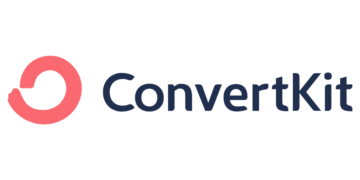No products in the cart.
Understanding Premium Content: What It Is and Why It Matters
Introduction to Premium Content
Premium content refers to high-value digital materials that provide significant benefits or insights to users, which are not freely available to the general public. This type of content can encompass a range of media, including e-books, online courses, specialized articles, and subscription-based newsletters. The essence of premium content lies in its ability to deliver unique experiences or knowledge that are tailored to specific audiences, allowing for deeper engagement and understanding compared to standard content offerings.
In an increasingly competitive digital landscape, organizations across various industries recognize the importance of premium content as a valuable asset. Businesses utilize this high-value content to not only establish authority within their respective fields but also to foster a loyal customer base. By offering in-depth resources and exclusive insights, companies can differentiate themselves from competitors who may solely rely on free or low-quality content.
The relevance of premium content has significantly grown in the digital age, where information overload is a common challenge. As users seek reliable and substantive resources, premium content serves as a solution, providing them with curated and well-researched materials. This becomes particularly vital in sectors like finance, healthcare, technology, and education, where expert knowledge can lead to informed decision-making and enhanced skills.
Moreover, the monetization aspect of premium content is noteworthy. For creators and businesses, offering high-value materials can be an effective revenue model, allowing them to capitalize on their expertise while ensuring sustainability. As users increasingly value personalized and cohesive experiences, premium content continues to gain traction, bridging the gap between information scarcity and the demand for quality resources.
Types of Premium Content
Premium content encompasses a range of offerings designed to provide users with high-value information and experiences. Understanding the different types of premium content available can help individuals and businesses select resources that align with their specific needs. Below are some common forms of premium content:
Ebooks are one of the most popular forms of premium content. These digital books typically offer in-depth insights on specific topics, often compiled by industry experts. Ebooks can serve as valuable resources for readers looking to enhance their knowledge, making them a robust vehicle for delivering high-value information.
Specialized courses provide structured learning opportunities, often including video lectures, quizzes, and interaction with instructors. These courses can focus on various subjects, from technical skills to personal development, offering participants high-value experiences that enhance their expertise. These courses may be available at a fee, reflecting the comprehensive content provided.
Subscription-based services deliver ongoing access to curated content, which may include articles, tools, and resources tailored to particular interests or industries. Subscribers benefit from continuous learning and updates, making their investment worthwhile as they gain high-value insights and knowledge over time.
Exclusive articles are often produced by thought leaders or professionals in a specific domain. These articles offer unique perspectives, trends, and analyses that are not found in standard publications. Accessing exclusive articles can enhance a reader’s understanding of complex themes, ultimately providing high-value discourse.
Webinars have gained prominence as a premium content format, allowing for live interaction between experts and participants. These online seminars cover targeted topics and enable participants to ask questions directly. The interactive nature of webinars adds significant value, fostering a sense of community while delivering high-value information.
Each type of premium content serves to address specific learner needs, providing various pathways for acquiring knowledge and skills that are critical in today’s fast-paced environment.
Benefits of Consuming Premium Content
Investing time and resources in premium content offers numerous advantages that can significantly enhance an individual’s knowledge base and professional acumen. One of the primary benefits is access to exclusive knowledge that is often not available in standard, free content. Premium platforms typically provide in-depth resources and expert insights that contribute to a well-rounded understanding of a particular subject matter. This level of detail is often lacking in general articles or free resources, thereby making premium content invaluable for serious learners.
Moreover, premium content is generally characterized by high-quality information. This information is meticulously researched, fact-checked, and curated to reflect the latest trends and developments. Consumers seeking credible and accurate knowledge find that engaging with premium content is a more reliable way to remain informed, especially within fast-evolving fields. This reliability is a critical factor for professionals aiming to make well-informed decisions based on trustworthy data.
Another significant advantage lies in the unique insights provided by experts in various industries. Premium content often features interviews, case studies, and analyses that showcase the perspectives of seasoned professionals. Such insights can inspire new ideas, foster innovative thinking, and help consumers navigate challenges in their own fields. By having direct access to expert opinions, individuals can gain a competitive edge that fortifies their decision-making skills.
Furthermore, consuming premium content facilitates continuous learning and the acquisition of curated resources that support personal development. The wealth of information available through these platforms helps professionals stay ahead in their fields. By dedicating time to engage with high-value content, consumers can ensure their knowledge remains current and relevant, ultimately contributing to personal and professional growth.
Creating Premium Content: Key Elements
Creating high-value content requires a strategic approach that encompasses several key components, each contributing to the overall quality and effectiveness of the material. First and foremost, depth of information plays a crucial role in distinguishing premium content from standard offerings. Comprehensive research, engaging multiple sources, and integrating expert insights can significantly enhance the substance. This not only establishes authority but also aligns with the expectations of discerning audiences seeking in-depth understanding.
The quality of presentation is equally important. A visually appealing layout enhances user engagement and retention. This includes appropriate use of images, typography, and formatting that together create an inviting reading experience. Properly structured articles, utilizing headings and bullet points, can facilitate information digestion and maintain reader interest. When content is packaged effectively, its perceived value increases, encouraging readers to invest more time in the material and share it within their networks.
Moreover, exclusivity is a vital element of premium content. Providing unique insights, data, or perspectives that cannot be easily found elsewhere encourages audiences to seek out and value your offerings. This exclusivity may stem from original research, proprietary interviews, or specialized knowledge that sets the content apart from competitors. Additionally, authenticity cannot be overstated; it fosters trust and credibility. Audiences are more likely to engage with and rely on content that reflects genuine expertise and a transparent voice.
Emphasizing collaboration with subject matter experts can also contribute to the richness of premium content. Their contributions can lend additional layers of depth and help in establishing a reputation as a reliable source of information. In crafting high-value content, it is essential to focus on authenticity, quality, and depth to enhance the perceived worth and ultimately cultivate a loyal audience base.
Monetization Strategies for Premium Content
Monetizing premium content is a crucial aspect that many creators navigate to derive revenue from their efforts. Various strategies exist, offering different pros and cons depending on the target audience’s preferences and engagement levels. One of the most prevalent approaches is the subscription model, wherein users pay a recurring fee for continuous access to premium content. This model fosters a steady income stream and encourages a loyal audience. However, the challenge lies in consistently delivering high-value content that justifies the subscription cost.
Another strategy involves one-time purchases, where users pay a set fee to access specific pieces of premium content. This method attracts users who are hesitant to commit to ongoing subscriptions. Nevertheless, the challenge is to ensure that each piece of content is attractive and valuable enough to convert potential customers into paying ones. Creators need to focus on unique offerings that stand out in a saturated market to encourage these transactions.
Membership sites present another effective monetization route. By creating exclusive communities or forums where members receive high-value resources, creators can foster engagement and promote loyalty. Membership models can also combine various content delivery mechanisms, such as webinars and interactive discussions. The downside here, however, can involve the time and effort needed to maintain an engaging community and provide follow-up content.
Lastly, tiered pricing schemes offer various levels of access, enticing users to choose one that aligns with their needs and budget. This flexibility can attract a diverse audience, but it may also complicate pricing strategies and content organization. Implementing these monetization strategies requires careful consideration of the audience’s preferences and the creators’ capacity to deliver consistently high-value content. The right combination can yield significant returns while ensuring user satisfaction.
Audience Engagement and Targeting
In the landscape of digital marketing, understanding and engaging the right audience is paramount for the creation of high-value premium content. Proper audience targeting allows businesses to cultivate stronger connections and meet the specific needs of their potential customers. By identifying the demographics, preferences, and behaviors of the target audience, marketers can craft content that resonates deeply and fosters engagement.
One of the initial steps in understanding audience needs is conducting thorough market research. This may involve surveys, social media analysis, and customer feedback to glean insights into what potential customers value most. Attention should also be paid to emerging trends and shifts in consumer behavior that could influence the way content is received and appreciated. By analyzing this data, businesses can shape their offerings to align with the desires of their target audience, thereby enhancing the perceived value of the content provided.
Segmentation is another effective strategy for engaging audiences. By categorizing the audience into smaller groups based on distinct characteristics—such as interests, purchasing habits, and demographic information—marketers can tailor their messaging. This approach allows for the delivery of more relevant content that speaks directly to the audience’s unique experiences and challenges, increasing the likelihood of engagement and retention.
Moreover, effective communication plays a critical role in building relationships with the audience. This can be achieved through personalized content, responding to inquiries promptly, and maintaining active dialogue on social media platforms. High-value premium content should not only inform but also invite interaction, encouraging users to share their thoughts and experiences. Establishing a two-way communication channel fosters a sense of community, making the audience feel valued and understood.
Ultimately, audience engagement and targeting are essential components in creating premium content that not only attracts but retains customers, leading to long-term success and loyalty.
Challenges in Premium Content Creation
Creating high-value premium content can present various challenges for both content creators and marketers. One significant hurdle is content saturation, where the online environment is flooded with a vast amount of information. This saturation makes it difficult for new entries to stand out and resonate with audiences. To combat this challenge, creators must focus on delivering unique perspectives and insights that offer genuine value, setting their content apart from the existing noise.
Another prevalent issue relates to audience skepticism. As consumers become more discerning and familiar with marketing tactics, they may question the authenticity and quality of premium content offerings. To address this challenge, it is essential to build trust with the audience by providing transparent information about the value and benefits of the content. Engagement through testimonials and expert endorsements can further enhance credibility, reassuring potential customers about the high-value propositions being offered.
Pricing dilemmas present yet another obstacle in the development of premium content. Striking the right balance between competitive pricing and perceived value can be tricky. If the price is set too high, potential consumers may be deterred; if set too low, it could imply a lack of quality. Conducting thorough market research is crucial to identifying the appropriate price point that reflects the content’s value while still appealing to the target demographic.
Finally, maintaining high-quality standards consistently can be particularly demanding as creators scale their operations. To mitigate this risk, establishing clear guidelines and quality assurance processes can help ensure that all content remains aligned with the intended high-value criteria. By recognizing and addressing these challenges, creators can better navigate the complex landscape of premium content and elevate their offerings to meet audience expectations.
Case Studies: Successful Premium Content Examples
Numerous brands across various industries have successfully harnessed the potential of premium content, proving its significance in driving engagement, loyalty, and revenue. One of the most notable examples comes from the media sector, particularly with The New York Times. The publication implemented a successful paywall strategy that encouraged users to subscribe for unlimited access to premium news articles, in-depth analyses, and interactive content. As a result, they effectively converted casual readers into paying subscribers, thus generating a substantial revenue stream and establishing a loyal audience.
In the educational field, platforms like MasterClass have launched innovative premium content offerings, transforming traditional learning methods. By providing high-quality video courses taught by industry experts—ranging from cooking to acting—MasterClass appeals to a diverse audience seeking to enhance their personal or professional skills. This combination of exclusive content and engaging presentation has garnered a significant subscriber base, effectively monetizing their offerings through annual memberships.
Another impressive case is that of digital fitness platforms such as Peloton. Their premium content strategy revolves around delivering live and on-demand fitness classes that users can enjoy from the comfort of their homes. The platform incorporates a strong community aspect, allowing subscribers to participate in real-time classes and interact with instructors, thus enhancing motivation and engagement. Peloton’s success is driven not only by high-value content but also by the integration of technology and personal connection, showing that premium content can foster community as well as loyalty.
Lastly, in the gaming industry, platforms like Twitch have revolutionized how gamers create and share high-value content through live streaming. Gamers can attract large audiences and monetize their streams through subscriptions, donations, and sponsorships. This case illustrates how premium content can tap into user-generated creativity, opening avenues for individuals to profit while doing something they love.
These examples illustrate the diverse applications of premium content across sectors, providing a solid framework for other brands and individuals looking to monetize their offerings effectively.
The Future of Premium Content
As we navigate through the rapidly evolving landscape of digital media, it is essential to speculate on the future of premium content. Technological advancements are poised to play a significant role in shaping how premium content is created, distributed, and consumed. With the emergence of artificial intelligence (AI), content creation is becoming more efficient and personalized. AI tools can analyze consumer preferences and behavior, allowing content creators to tailor high-value content that resonates deeply with audiences. This level of customization is expected to enhance user engagement and satisfaction, yielding higher retention rates and fostering brand loyalty.
Moreover, the integration of virtual reality (VR) and augmented reality (AR) promises to redefine the premium content experience. As these technologies become more accessible, premium content could evolve from traditional formats into immersive experiences, allowing users to interact with content in a multi-dimensional space. This immersive engagement is likely to attract a new audience segment that craves innovative and experiential media. With users becoming more sophisticated in their content consumption, the demand for high-value experiences is anticipated to rise, compelling content creators to push the boundaries of creativity and technological application.
In light of changing consumer behavior, it is critical for businesses to understand the value of premium content in maintaining competitiveness. As audiences increasingly seek interactive, authentic, and informative experiences, the expectation for transparency and quality will heighten. Brands must prioritize their content strategies to ensure alignment with these evolving consumer preferences. Examining emerging trends will help stakeholders identify opportunities for premium content investment, whether that be through collaborative efforts between creators or leveraging new distribution platforms.
As we look ahead, it remains crucial for content creators and brands to adapt to a landscape that is forever altered by innovation. Adopting a forward-thinking approach will not only enhance the creation of high-value content but also ensure its relevance in an ever-changing marketplace.






















![A Comprehensive Review of [Course/Product/Experience Name] 22 man in gray shirt sitting on black chair](https://theamericansidehustle.net/wp-content/uploads/2025/03/man-in-gray-shirt-sitting-on-black-chair-1-scaled.jpg)














































































